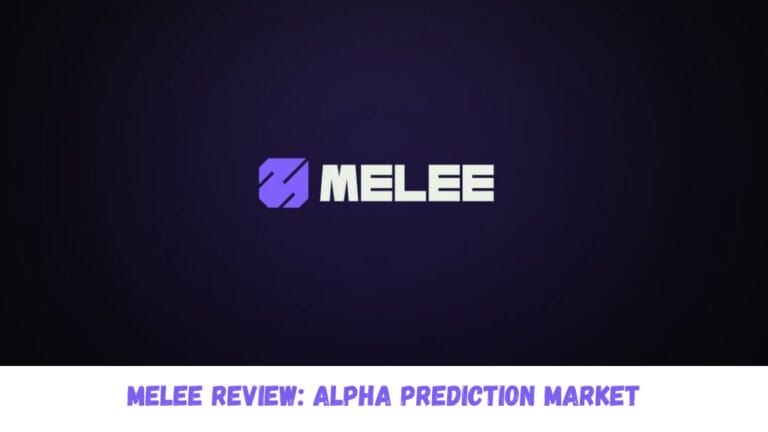In recent years, cryptocurrency staking has become an increasingly popular way for investors to earn passive income. With the rise of Proof of Stake (PoS) and Delegated Proof of Stake (DPoS) blockchain networks, staking offers the opportunity to support the network and earn rewards in the process.
This 2023, let’s take a look at the 10 best cryptocurrencies to stake, based on their potential returns, stability, and overall growth prospects.

Also read, Crypto Lending vs Crypto Staking
Table of Contents
How to pick which crypto to stake?
When choosing a cryptocurrency to stake, it’s essential to consider several factors, such as the project’s fundamentals, staking rewards, and the token’s figures. Terra Classic (LUNC) price and charts is one example that has gained attention in the staking community.
- Research the underlying technology and potential of the cryptocurrency. Look for projects with a strong team, clear use case, and a promising future.
- Evaluate the consensus mechanism and staking model. Different cryptocurrencies use different consensus mechanisms, such as Proof of Stake (PoS), Delegated Proof of Stake (DPoS), or Liquid Proof of Stake (LPoS). Choose a cryptocurrency with a staking model that aligns with your preferences and risk tolerance.
- Compare staking rewards and annual percentage yield (APY). Look for cryptocurrencies that offer competitive staking rewards and APY, but be cautious of extremely high returns, as they may be unsustainable or too risky.
- Consider the lock-up period and minimum stake requirements. Some cryptocurrencies require you to lock up your tokens for a certain period before you can withdraw your rewards. Make sure you are comfortable with the lock-up period and the minimum stake required to participate in staking.
- Assess the security and ease of staking. Choose a cryptocurrency that provides a secure and user-friendly staking process. This may involve staking on an exchange, using a hardware wallet, or using a dedicated staking platform.
- Diversify your staking portfolio. Just like with any investment, it’s wise to diversify your staking portfolio to minimize risk and maximize potential returns.
Top cryptos for staking to get highest reported rewards in 2023?
Ethereum
Ethereum is the most popular platform for building decentralized applications. It was also the first to implement smart contracts, which are self-executing agreements between two parties. This means that Ethereum has some of the most stable and secure blockchains in existence today.
In addition to being one of the most stable blockchains, it also has a large developer community that continues to expand on its capabilities through dApps (decentralized applications) and tokens like ERC20 tokens–the standard by which all other cryptocurrencies are measured against when trying to determine their value as investments or holdings.
Cardano
Cardano is a decentralized public blockchain and cryptocurrency project that is fully open source. Cardano is the first blockchain platform to evolve out of a scientific philosophy and a research-first driven approach, with its security guaranteed by Haskell code running on hardware devices.
Cardano can be described as having two layers: one that handles smart contracts and another that stores user information. The first layer has been coded in Haskell and runs on Ouroboros, which serves as its consensus algorithm; meanwhile, ADA tokens are used for transactions within this ecosystem.
Tezos
Tezos is a blockchain platform that allows for the creation of smart contracts. Tezos also has a built-in governance system, which means that its community can vote on changes to the protocol.
The first blockchain to be approved by the SEC, it’s no surprise that Tezos has seen its fair share of controversy in recent years–but don’t let this put you off! It remains one of the most promising projects around and could revolutionize how we think about digital currencies.
Solana
Solana is a blockchain platform that can scale to handle 1,000,000 transactions per second. It’s a proof-of-stake blockchain network that is designed to be scalable, efficient and secure.
The Solana team has been working hard to make their vision a reality with an alpha testnet being launched in January 2019. The team has also released an SDK which allows developers to create dApps on top of the Solana platform.
Polkadot
Polkadot is a blockchain platform that allows for the creation of multi-chain applications (MApps). The Polkadot protocol allows for cross-chain communication, as well as the seamless transfer of data between chains.
Polkadot was created by Gavin Wood and Jutta Steiner in 2015, with development beginning in 2016. The project has been in development since then, with a public testnet launched earlier this year and mainnet launch scheduled for Q1 2019.
ChainGPT
ChainGPT is an artificial intelligence (AI) model designed to cater to various crypto and blockchain needs, such as coding contracts, answering questions, analyzing markets, and more. It was launched by Seedify, a leading launchpad and incubator in the crypto industry.
ChainGPT provides users with comprehensive information related to blockchain and cryptocurrency, making it an excellent resource for individuals who want to learn more about the blockchain and crypto space. CGPT coin is used for various purposes within the ChainGPT ecosystem.
Avalanche
Avalanche is a decentralized cryptocurrency that is focused on privacy and scalability. It’s not a fork of another cryptocurrency, but was developed from scratch by its developers. Avalanche uses the PoS (Proof-of-Stake) consensus mechanism to secure its network and provide rewards for staking your coins in a wallet.
The developers have stated their goal as creating “a truly anonymous blockchain”. One way they’re doing this is by using state channel technology, which allows users to create private transactions off-chain before broadcasting them onto the mainnet when necessary.
Cosmos
Cosmos is a decentralized network of independent blockchains, where each node can interact with any other node in the network. It’s also one of the first projects to be built on top of Tendermint Core (the settlement layer protocol that Cosmos uses), which enables its users to create their own blockchain and have it connected to the Cosmos Hub.
Cosmos has been gaining momentum since its launch in 2018, with several notable companies committing resources towards developing on this platform. In 2019 alone there were over 20 companies building applications on top of Tendermint Core–including MakerDAO and OmiseGo–and this number continues to grow every day.
Algorand
Algorand is a scalable and decentralized blockchain network that uses a Byzantine fault tolerant (BFT) consensus algorithm. The main idea behind Algorand is to create an immutable ledger as well as a system of smart contracts, which can be used for various applications including financial markets, supply chain management, etc.
The Algorand network works on two layers: the protocol layer and application layer. The former deals with the communication between nodes; whereas the latter allows developers to build their own applications based on this protocol by inserting them into the ecosystem of Algorand’s blockchain platform.
Near Protocol
Near Protocol (NEAR) is a layer-one blockchain that aims to solve the problems of slow transaction rates, limited throughput, and poor compatibility. Designed as a community-run cloud computing platform, it eliminates some of the limitations that have been affecting competing blockchains, such as low transaction speeds, low throughput, and poor interoperability.
NEAR Protocol uses a unique consensus mechanism called Thresholded Proof of Stake, which involves epoch rewards, a protocol treasury, transaction & storage costs, inflation, and scaling & security thresholds. The platform also employs innovative technologies such as sharding, staking selection, and randomness to ensure its smooth functioning.
Also read, Liquid Staking: A New Way to Earn Passive Income with Crypto
Conclusion
In conclusion, staking cryptocurrencies offers an attractive way to earn passive income while supporting the growth and security of blockchain networks.
As we move deeper into 2023, these 10 cryptocurrencies present promising staking opportunities for investors looking to diversify their portfolios and generate returns in the ever-evolving world of digital assets.










